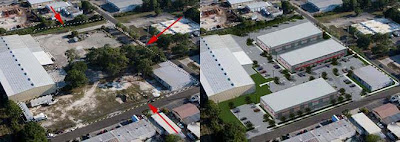
Some Practical Solutions:
Pasting one object behind another, adding a 3D sitemap into an aerial scene, and duplicating
objects in a very specific area.
First, using a selection tool, select the area you wish to have another object occupy. In this instance, we will use the site area of this business park (See Figure 1-1). Then, copy the other object. Finally, from the menu bar, click Edit �� Paste Into. A layer mask is created
automatically, and as you can see in Figure 1-2, the 3D sitemap now occupies the space that you
selected. No matter where you move the new layer, it can not leave the confines of the selection
set used to create the layer mask.
Additional Tips:
When creating your selection, use the “Feather” feature found in the Options Bar. It helps make
the outer area of the copied object fade into the scene.
To get the entire Tutorial Download the PDF ( Click Here To Download )
 This tutorial will guide you through the process of making 3D tiling background for use with web pages, your desktop, or any thing else for that matter. You will get to see the use of Blender and graphic editing such as Adobe Photoshop or GIMP. The tutorial will provide detailed explanation to cator to beginners.
This tutorial will guide you through the process of making 3D tiling background for use with web pages, your desktop, or any thing else for that matter. You will get to see the use of Blender and graphic editing such as Adobe Photoshop or GIMP. The tutorial will provide detailed explanation to cator to beginners.





























